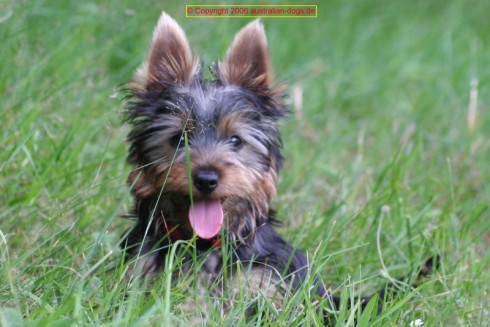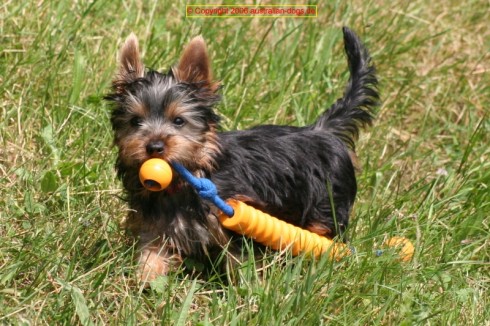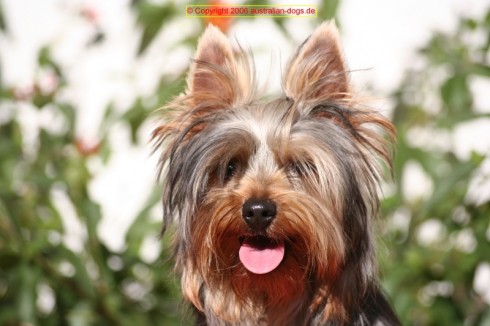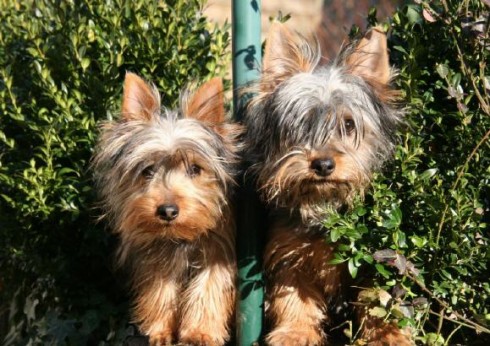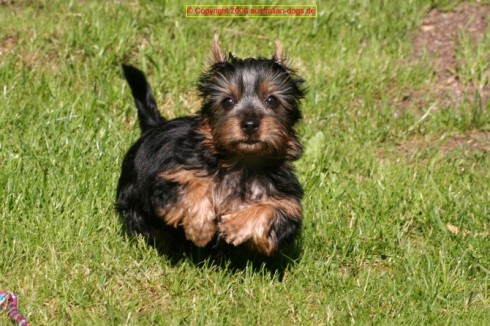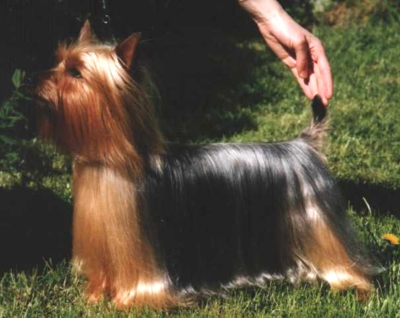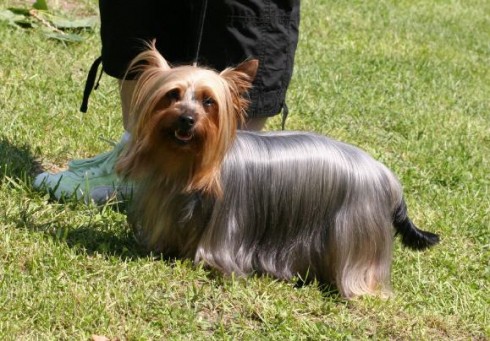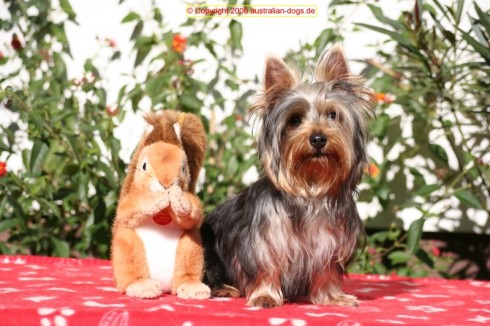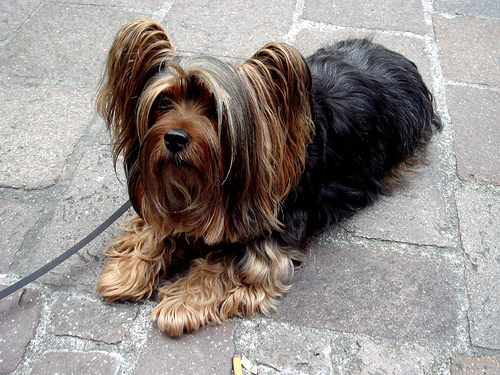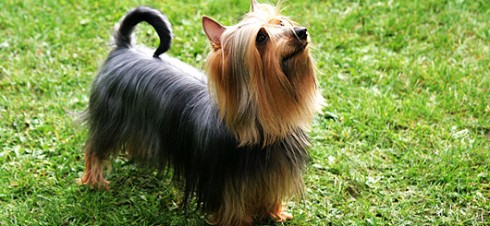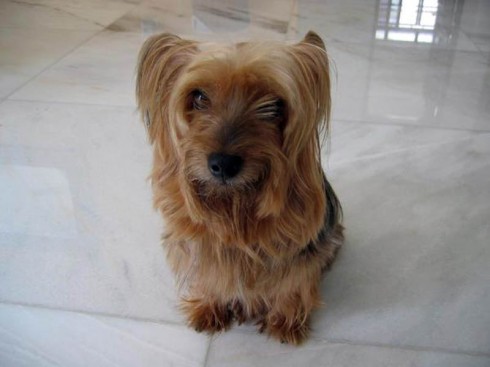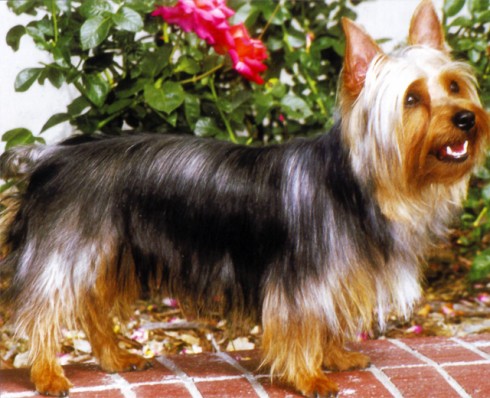Main Index
In Store
Our Web Store
Miniature Schnauzer Picture Gallery
Latest Dog Blogs
- What Are The Basic Commands To Train A Dog?
- PaySafe As The Most Popular Type Of Deposit
- Everything You Need To Know About Pet Sales
- Dogs Contribute To Our Physical And Mental Well Being
- How To Choose Where To Bet On Greyhounds In 2022
- Volunteer With Animals - How To Help Dogs Around The World
- Basic Understanding Of The House Edge
- Why You Should Get A Dog
- Top 20 Popular Dog Names Around The World
- Constipation in Dogs and How to Find Solutions
Australian Silky Terrier
Australian Silky Terrier Picture Gallery
Australian Silky Terrier Breeders
Australian Silky Terrier Clubs/Associations
The Full Australian Silky Terrier Description
Indicative Breed Standard
General Appearance
Compact, moderately low-set, medium length with refined structure; sufficient substance to suggest ability to hunt and kill domestic rodents. Straight silky hair parted from nape of neck to root of tail, presenting a well-groomed appearance.
Characteristics
Terrier-like, keen, alert, active.
Temperament
Very friendly, quick and responsive.
Head and Skull
Moderate length, slightly shorter in length from tip of nose to between eyes than from there to top rear of occiput. Moderately broad between ears; skull flat, without fullness between eyes. Nose black.
Eyes
Small, round, dark as possible, not prominent, keen intelligent expression.
Ears
Small V-shaped, with fine leathers, high on skull and pricked; entirely free from long hair.
Mouth
Jaws strong, with a perfect, regular and complete scissor bite, i.e. upper teeth closely overlapping lower teeth and set square to the jaws. Teeth even and not cramped, lips tight and clean.
Neck
Medium length, refined, slightly arched. Well covering with long silky hair.
Forequarters
Shoulders fine, well laid back, well angulated upper arms fitting snugly to ribs; elbows turn neither in nor out; forelegs straight with refined round bone, set well under body with no weakness in pasterns.
Body
Slightly longer than height. Level topline; well sprung ribs extending back to strong loins. Chest of moderate depth and breadth.
Hindquarters
Thighs well developed. Stifles well turned; when viewed from behind, the hocks well let down and parallel.
Feet
Small, well padded and cat-like. Closely knit toes with black or very dark toenails.
Tail
Customarily docked.
Docked: Carried erect; not over-gay. Free from long feathering.
Undocked: Carried erect, not over-gay. Free from long feathering. Length to give an overall well-balanced appearance.
Gait/Movement
Free, straight forward without slackness at shoulders or elbows. No turning sideways of feet or pasterns. Hindquarters have strong propelling power with ample flexibility at stifles and hocks. Viewed from behind, movement neither too close nor too wide.
Coat
Straight, fine and glossy; silky texture; length of coat 13-15 cms (5-6 ins) from behind ears to set-on of tail desirable. Legs, from knees and hocks to feet, free of long hair. Fine silky ‘top-knot’, not falling over eyes. Long fall of hair on foreface and cheeks undesirable.
Colour
Blue and tan, grey-blue and tan, the richer these colours the better. Blue on tail very dark. Distribution of blue and tan as follows:
Silver-blue or fawn top-knot, tan around base of ears, muzzle and on side of cheeks; blue from base of skull to tip of tail, running down forelegs to near knees and down thighs to hocks; tan line showing down stifles, and tan from knees and hocks to toes and around vent. Blue colour must be established by 18 months of age.
Size
Most desirable weight about 4 kgs (8-10 lbs). Height approximately 23 cms (9 ins) at withers, bitches may be slightly less.
About Our Article Directory
- Article
- 27 November 2010
- 2 comments
Canis lupus familiaris
- Breed Article
- 29 May 2010
- No comments
Quick Search
Donate
Latest Dog Pods
- Tips on How to Stop Your Dog from Biting
- Beware - Not All Advertised Dog Rescues Really Are! How Can You Know The Truth?
- Helpful Tips For Dog Obedience Problems
- How to Keep Dogs From Eating Poop
- Dog Grooming Tips - A General Overview of the Very Basics of Dog Grooming
- Recognising Different Types of Dog Obedience Problems
- 5 Important Tips On Feeding A Puppy


